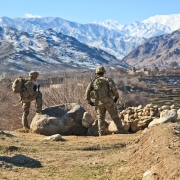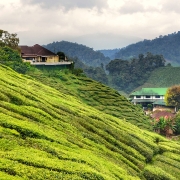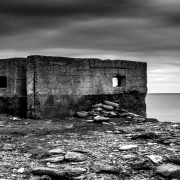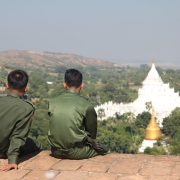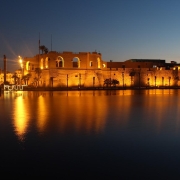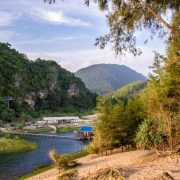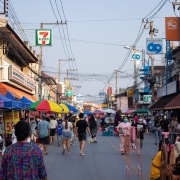What is the United Nations Standby Arrangement System?
Topic of Study [For H2 History Students]:
Paper 1: Safeguarding International Peace and Security
Section B: Essay Writing
Theme III Chapter 3: UN Reforms
Historical context: Agenda for Peace
In 1992, the United Nations Secretary-General (UNSG) Boutros Boutros-Ghali published a report known as “An Agenda for Peace” in response to a request made by the United Nations Security Council (UNSC) to derive analysis and recommendations to enhance peacekeeping in the post-Cold War phase.
As a result, the Department of Peacekeeping Operations (DPKO) was formed in March 1992 to focus on the planning, preparation and management of peacekeeping operations. Under Boutros-Ghali’s report, the DPKO served to enhance the United Nations’ capacity for peacekeeping and preventive diplomacy.
Hesitation: Operational Constraints
As one of the many UN reforms, this report led to the establishment of the United Nations Standby Arrangement System (UNSC) in a year later. The UNSAS was meant to provide standby military forces that are deployable at short notice, so that peacekeeping operations can be carried out efficiently.
While member nations deliberated on the conditions for deployment, the ongoing peacekeeping mission in Somalia diminished the US willingness to support new operations. Over time, more member nations became worrying cautious.
Moreover, by May 1994, in the wake of disasters in Somalia and elsewhere, the Security Council was becoming more cautious than before about embarking on new peacekeeping missions. At the same time, many states were devising restrictive criteria about the circumstances in which they would be prepared to commit forces to UN operations. In May 1994, with the adoption of the Presidential Decision Directive 25, the US Government set firm limits regarding the situations in which the US would support the creation of, or be willing to participate in, UN peacekeeping forces.
An excerpt taken from “The United Nations Security Council and War: The Evolution of Thought and Practice since 1945” by Vaughan Lowe, Adam Roberts, Jennifer Welsh and Dominik Zaum.
Enhancements to the Standby Arrangement System
In February 1995, the UNSC responded to Boutros-Ghali’s ‘Supplement to An Agenda for Peace‘, asserting the urgent need to improve the capacity for ‘rapid deployment’ through existing stand-by arrangements. This Supplement included a suggestion to develop a rapid-reaction force to ensure that operational constraints could be minimised or even resolved.
UNSAS was designed to serve four overlapping objectives.
First, it seeks to provide the UN Department of Peacekeeping Operations with a precise understanding of the forces and capabilities member states have available at an agreed state of readiness for peacekeeping.
Second, it aims to facilitate mission planning and force generation by helping to identify appropriate resources for a deployment, as well as options for contingency plans.
Third, UNSAS is designed to assist with rapid deployment. Although the arrangements are conditional, it is hoped that those members who have confirmed their willingness to provide standby resources will be more forthcoming and committed than might otherwise be the case.
Fourth, UNSAS should encourage member states to discuss and prepare for a possible contribution to a UN peacekeeping operation, providing guidance for plans, budgets, and appropriate training. In short, UNSAS provides an initial commitment to service and a better understanding of the requirements in advance.
An excerpt taken from “Improving United Nations Capacity for Rapid Deployment” by Dr. H. Peter Langille.
Notably, the UNSAS also functions as a database system to keep track of potential troop-contributing countries (TCCs). However, these TCCs that pledge specific operational capabilities are conditional, meaning that contributions remain voluntary in nature. A United Nations request for permission to deploy these capabilities must be sort and financial compensation will be given after deployment.
Moreover, by May 1994, in the wake of disasters in Somalia and elsewhere, the Security Council was becoming more cautious than before about embarking on new peacekeeping missions. At the same time, many states were devising restrictive criteria about the circumstances in which they would be prepared to commit forces to UN operations. In May 1994, with the adoption of the Presidential Decision Directive 25, the US Government set firm limits regarding the situations in which the US would support the creation of, or be willing to participate in, UN peacekeeping forces.
Jennifer Welsh and Dominik Zaum.
Is it enough: The Brahimi Report
Although the UNSAS was considered a work-in-progress in the 1990s, the United Nations still struggled to deploy its peacekeeping forces quickly, especially in cases when the missions are complex. In view of these setbacks, a Panel on UN Peace Operations was established in 2000 and chaired by the former Algerian Foreign Minister Lakhdar Brahimi. It concluded with the publication of the Brahimi Report that listed recommendations for the improvement of peacekeeping operations.
D
What can we learn from this article?
Consider the following question:
– Assess the effectiveness of United Nations reforms to maintain international peace and security in the 1990s.
Join our JC History Tuition to learn more about the United Nations. The H2 and H1 History Tuition feature online discussion and writing practices to enhance your knowledge application skills. Get useful study notes and clarify your doubts on the subject with the tutor. You can also follow our Telegram Channel to get useful updates.
We have other JC tuition classes, such as JC Math Tuition and JC Chemistry Tuition. For Secondary Tuition, we provide Secondary English Tuition, Secondary Math tuition, Secondary Chemistry Tuition, Social Studies Tuition, Geography, History Tuition and Secondary Economics Tuition. For Primary Tuition, we have Primary English, Math and Science Tuition. Call 9658 5789 to find out more.

